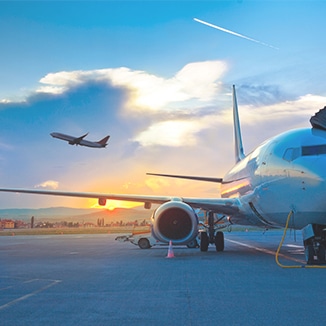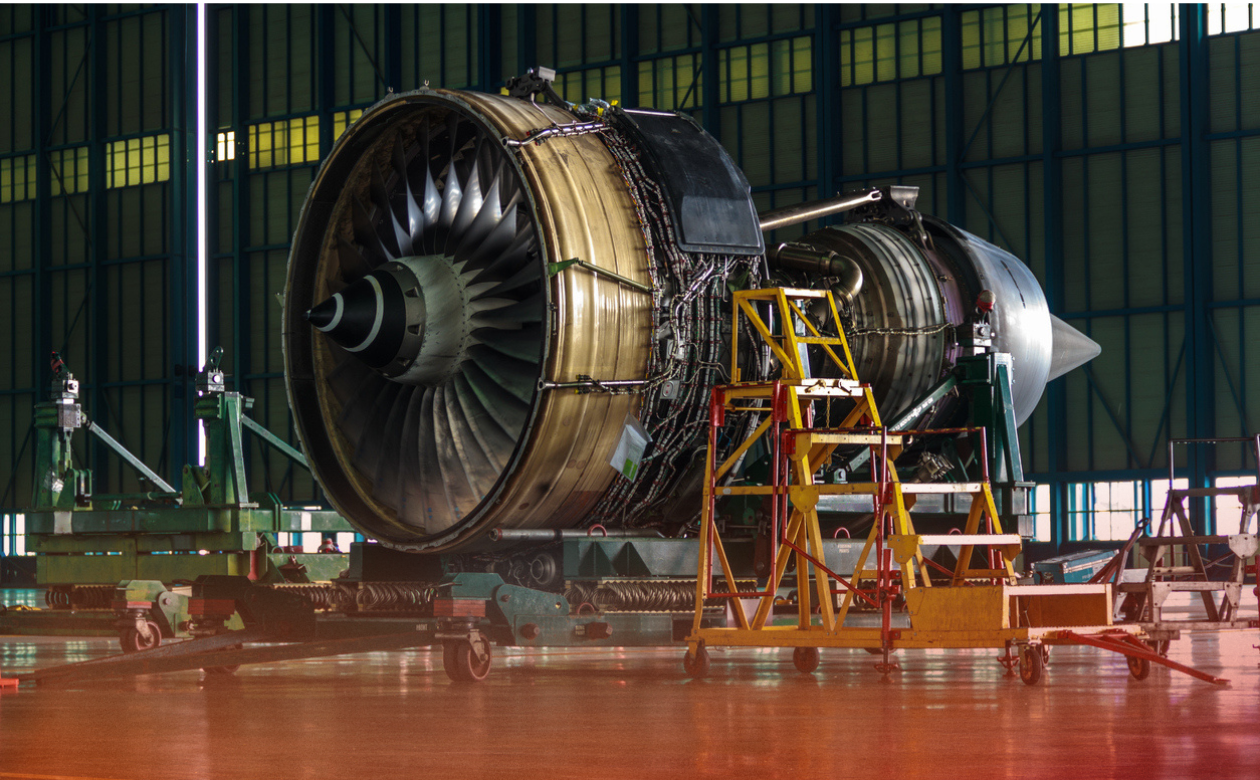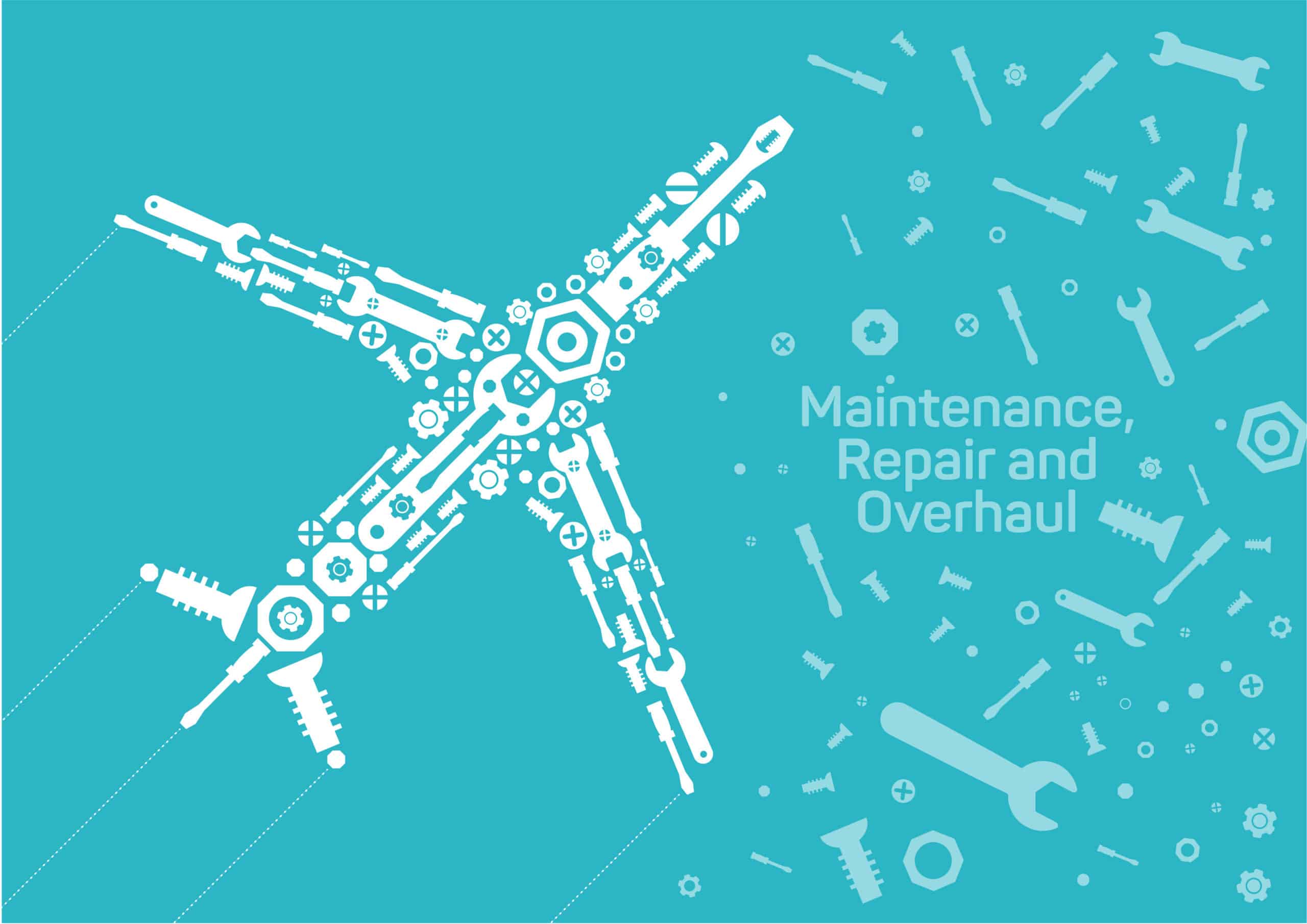The aviation MRO market is booming. In fact, the global Maintenance, Repair and Overhaul business for aviation is expected to reach $100.4 billion by 2025. That’s a 4.1% average annual growth rate according to Wyman’s Global Fleet and MRO Market Forecast. Outsourced maintenance, regional spend differences, and technology innovations are all important trends to watch for the global aviation MRO market.
Outsourced Maintenance Global Aviation MRO Market
Outsourced maintenance has seen a steady rise in the aviation MRO market. Just after the turn of the decade, the International Air Transport Association (IATA) completed an Airline Maintenance Cost Executive Commentary summary that revealed outsourced maintenance accounted for an average of 62% of direct maintenance costs. Also, among the 40 major airlines covered in the study, 58% outsourced all their engine maintenance, representing nearly 60% of direct maintenance costs.
Four Key Maintenance Areas
The Wyman study provides analysis of the cost breakdown four key maintenance areas, and reaches the following conclusions:
- Airframe: Heavy maintenance costs for the airframe are improving with the adoption of new technology (from 22% in 2015 to 17% in 2025)
- Engine: The engine sector takes a larger share (from 42% in 2015 to 47% in 2025)
- Component: Cost share remains flat at 19%
- Line: For line maintenance, MRO cost share remains flat at 18%
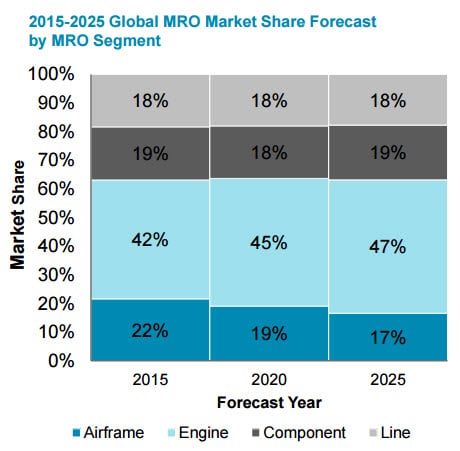
Regional Spend Differences in the Aviation MRO Market
Pronounced regional differences in MRO spend growth rates are expected to continue as the industry moves forward. Particular pressure comes to bear on the Asia Pacific region, and in India and China, where both compound annual and absolute growth will far exceed other regions. This will challenge the region to build the necessary infrastructure this growth will demand.

New Technologies and Ongoing Challenges
The Wyman survey identified eight new technologies will impact MRO.
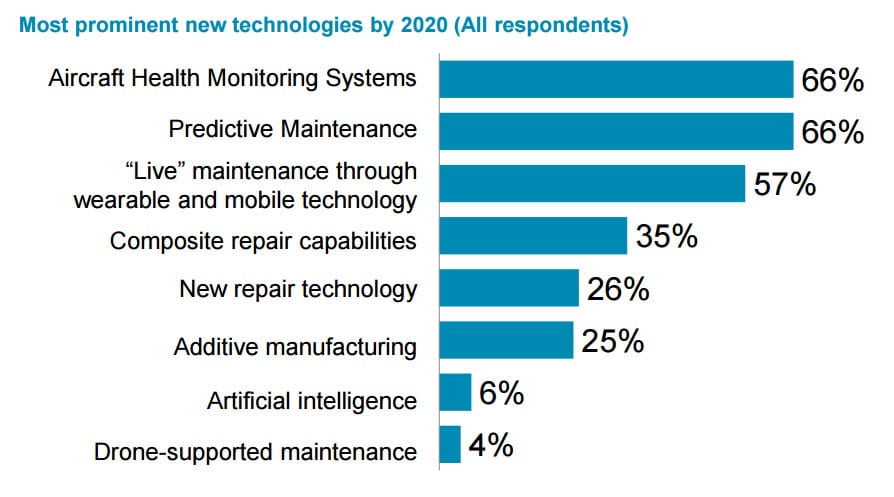
While these technologies reflect innovation and point to shifts in the sector, the aviation MRO market has not shown itself to be particularly adept at incorporating innovative change. When asked to complete the sentence, “The MRO industry innovates,” survey respondents answered:
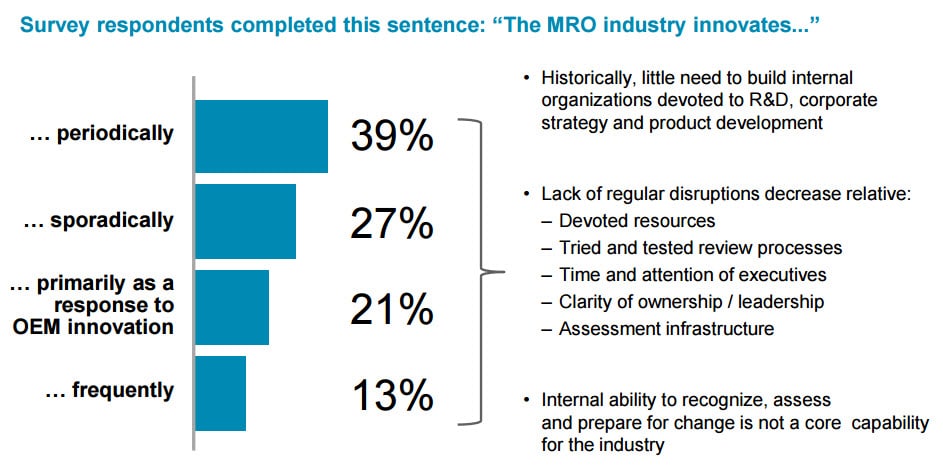
When markets and technologies are moving as fast as they are today, these responses indicate that innovation and technology adoption are quite a challenge in the MRO sector.
Why is Innovation a Challenge in the Aviation MRO Market?
There has been little historical need within MRO to build internal organizations devoted to R&D, corporate strategy, and product development. A lack of regular disruptions in the sector has decreased relative devoted resources, and tested longstanding review processes. Executive focus, clarity of ownership and leadership, and development of an assessment infrastructure are all reasons for innovation to become a challenge in aviation MRO. The internal ability to recognize, assess, and prepare for change has not been a core capability for MRO.
Meeting the Challenge
As the sector continues to address the need to innovate and incorporate new technologies, one area of focus should be extending the Digital Thread through to MRO. The Digital Thread represents the sum of all data (i.e., model data, product structure data, metadata, effectual data, and process definition data, including supporting equipment and tools) digitally linked to form a single, contiguous definition of all value-added decisions made during the definition of a product, its configuration, manufacturing and repair processes, logistics, and operational support. It provides a single reference point for design, engineering, manufacturing, and service, ensuring they act in concert.
The Imperative for the Digital Thread in MRO
The evolution to the Digital Thread in MRO is imperative, because of the advantages that its adoption facilitates. While MRO has been slower to adapt to digitalization than design, engineering, and manufacturing, it is beginning to catch up. All manufacturing sectors are moving rapidly towards digitalization, and MRO needs to be part of that trend.
The value of the Digital Thread in MRO is how it completes connectivity across the enterprise, thereby providing a vital link to requirements for MRO practitioners by empowering them to look back through the thread to all essential information in the enterprise and its value chain. Those MRO organizations that embark on and complete this innovative journey will thrive, while those who continue to resist change will probably fall behind their competition.


